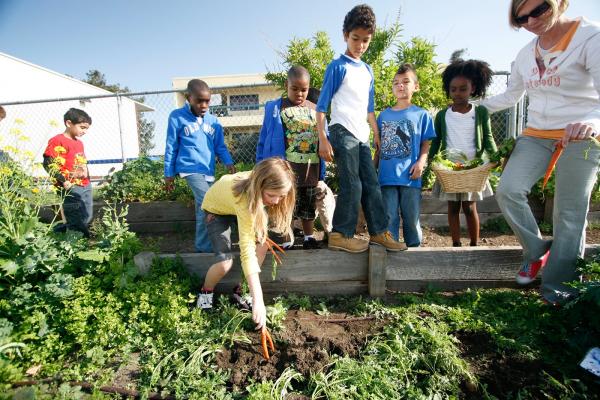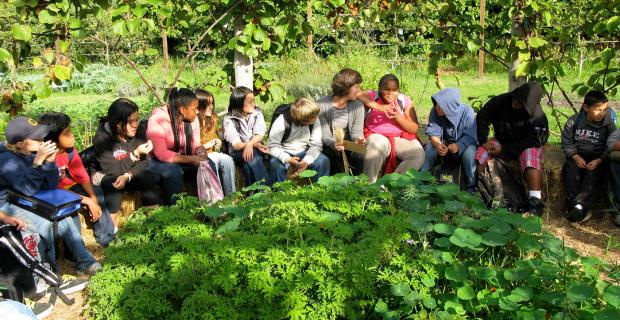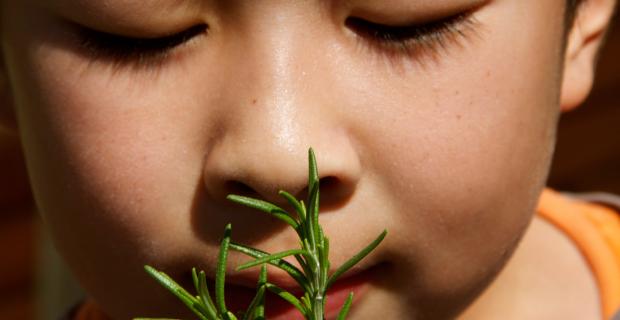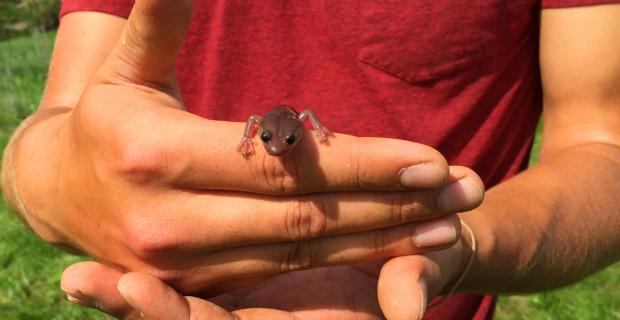Out of the Building - and into the Classroom

We've always advocated expanding the notion of "classroom" to get students outdoors — into gardens, schoolyard habitats, and the natural world. But how to find time in packed class schedules? How to make the outdoors more than a break from — or competition with — time in the "real" classroom? Some schools are turning those questions around: what if we commit to regular, extended outdoor experience, and then fit what we want to teach to the setting? Here are three schools trying that tack, while maintaining high academic expectations and records of success.
Waldorf School of Saratoga Springs
Students in the "forest kindergarten" of the Waldorf School of Saratoga Springs, New York spend three hours outdoors every day — in rain, shine, snow, or temperatures below freezing. They encounter the world in its changeable variety and richness. They learn about natural cycles, sing and dance, build teepees from sticks and vines, become comfortable with the outdoors as a place to explore and nature as a classroom that is always available to them.
"Their large motor skills developed, they worked out their social skills in a better way, they had more imaginative play, teacher Sigrid D'Aleo told a New York Times reporter. "Children's senses are so overtaxed in these modern times, so here, it is very healthy for them."
Willow School
Willow School, a K–8 school in Gladstone, New Jersey, is one of the schools profiled in the Center for Ecoliteracy book, Smart by Nature: Schooling for Sustainability. "The buildings are designed so that the inside flows out and the outside is brought in," says Head of School Kate Walsh. Each classroom has tall windows, giving students a constant visual experience of the woods outside; watching out the window is part of learning, rather than a distraction from it. Doors in every classroom open to the outdoors. Classes move in and out freely. The school has no paved playground with adult-designed play structures. Kids play in the woods, where their playground equipment is what they find and what their imagination can make with it. Meanwhile, students participate in a long-term study of wetland evolution by observing and chronicling changes — season by season, year by year — in an on-campus marsh wetland that is reestablishing itself after centuries of farming on the site. Every child is also responsible for a small plot of land, tracking the history of that piece of the campus over their nine years at the school.
Greenwood School
Greenwood School, a Waldorf-inspired K–8 school in suburban Mill Valley, California, has created its own variation. For a full day every week, students "get away from the confinement of chairs and desks and into nature's amazing classroom." Classes might be held in a redwood grove, a nature education center, or on a local farm. Any part of the curriculum can be adapted for Nature Day: fairy tales and folklore, poetry, biodegradable art projects, social and cultural history, physical education, organic chemistry, local and world citizenship.
A key to the Greenwood approach is a curricular progression adapted to children's intellectual and emotional development. Classes at lower grades emphasize the sense of wonder from which kinship with the Earth can grow. Upper grades add intellectual rigor, scientific observation, practical applications of ecological principles, and environmental projects that serve the larger community. The progression also moves outward geographically and socially: from students' knowing their home place by exploring sites within walking distance; to learning about local agriculture, planetary ecology, and astronomy; to grappling with the challenges facing citizens of the world.
Physical, Mental, and Social Benefits
All this time outdoors, including commitments to getting outside regardless of the weather, is paying off, in some expected and some unexpected ways. The Children & Nature Network has issued volumes of research on the physical, mental, and social benefits of contact with nature. Students in a study of Scandinavian programs where they spent 60 to 70 percent of their time outdoors suffered 80 percent fewer infectious diseases than children in indoor programs. Ophthalmology studies suggest that children who spend more time outdoors are less prone to astigmatism.
Some researchers even hypothesize that childhood exposure to microorganisms, such as those in soil, confers important protection against certain allergies and autoimmune system ailments later in life. Adherents of the "hygiene hypothesis" suggest that too much time in sterilized environments — too little time playing in the dirt — may help to account for rising rates of some diseases and immune system disorders.




